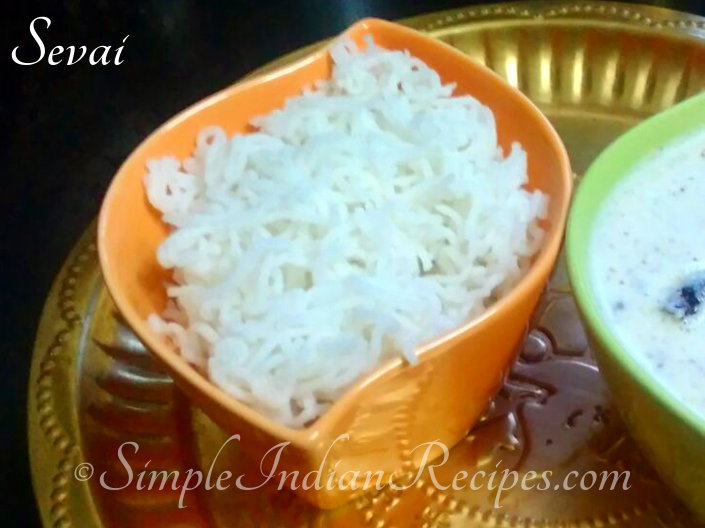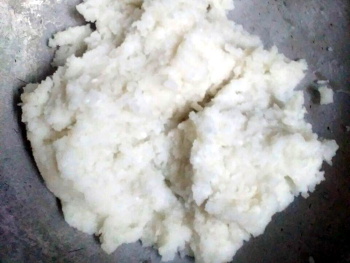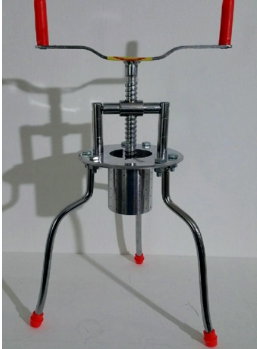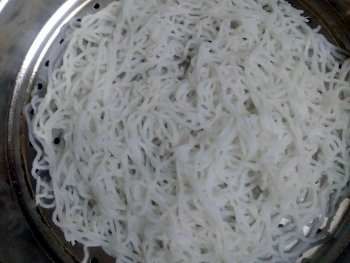- Submitted by Raji Ramakrishnan
(South Indian Rice Noodles, Shyavige, Santhakai)

Jump to recipe ↓
Sevai (also known as Shyavige or Santhakai) is the South Indian version of rice noodles. It is the cousin of semiya and idiyappam. Idiyappam originated in Kerala whereas sevai is from Tamil nadu. Sevai is also made in parts of Karnataka. Another difference between idiyappam and sevai is in the method of making. Idiyappam is made with raw rice flour. Do check out the recipe for making idiyappam here. Sevai on the other hand is traditionally made with rice after soaking it. It can also be made with other grains too. You can make ragi sevai, bajri sevai, wheat sevai etc.
Once the basic sevai is made you could make other variations like lemon sevai, puli sevai, sevai biriyani, coconut sevai, thakkali sevai (like tomato rice), kothamallli sevai etc. These days different sevai varieties are easily available in supermarkets in dried form. For convenience, you can buy them, re-hydrate in some hot water and use it. The taste of the dried one and the fresh one is in no way comparable. The fresh home made sevai is very soft and has a pleasant aroma. It is a time consuming process though. If you have about 2 hours to spare, you can relish this fresh sevai.
Here is the traditional recipe for making sevai shared by my friend Raji. She has made it in the authentic way which yields the best results. I take a short cut which I have shared in the variation below. There is also video instruction shared by Raji. Do try it out and enjoy.
Recipe for Homemade Sevai
Preparation time: 45 minutes
Cooking time: 20 minutes
Serves: 3
Ingredients
- Raw Rice - 1 cup
- Boiled Rice - 1 cup (I used brown rice)
- Oil - 2 tsp
- Salt - as needed
Method
- Wash and soak the boiled brown rice for 5-6 hours. Also, wash and soak the raw rice for at least 2 hours.
- Mix together and grind it in a grinder (or mixie) to a smooth batter.with little salt. The batter should not be watery. It should be a semi solid form, like a thick idli batter.
- Transfer the batter into a kadai, add oil and switch on the flame. Keep stirring continuously on low flame using a heavy ladle and cook until a dough is formed. The dough will be similar to the one you make for kozhukkatai (modak). The dough forms very quickly.

- When it is done, remove from stove and keep aside to cool. Remove the dough onto a bowl and knead it.
- Make big balls out of the dough formed as can be seen in the video. Place the balls in a idli plate or a steamer. Steam it for 10 - 15 minutes.
- Do not switch off the gas. Remove one by one and put it in the seva nazhi when it is still hot. If it gets cooled, it will become harder to squeeze through.

- Squeeze to get the rice noodles. Enjoy this lovely item.

Video Instructions for making Sevai
Serving Sevai
- Sevai can be served with moru kootan,sweetened coconut milk, coconut milk chutney, chicken kurma, mutton curry, veg kurma, potato stew or any other gravy. My mother-in-law used to mix together i.e. moru kootan and sevai, keep for the next day to eat with appalam which she loves.
- You can season the sevai with some mustard seeds, dry red chilies and curry leaves. Also mix with your favorite flavorings like grated coconut to make thengai sevai, or some lemon juice to make lemon sevai, or pulikachal to make puliogarai sevai, or beaten curd to make thayir sevai or sauteed vegetables to make vegetable savai. You can also mix kothamalli podi or kavrvepillai podi with the sevai and serve.
Variation
- As I said before, this is an alternate way of making sevai in a little simpler way. Soak the rice in water for 3-4 hours . Grind the soaked rice to a fine batter with some salt. Pour a spoonful of the batter in greased idli plates and steam it for 10-15 minutes. After the idlis are cooked, cool it enough to handle and put it in the sevai nazhi (or idiyappam press). Press out the noodles (sevai) onto the serving plate.
- You can also make sevai using rice flour or idiyappam flour.
More Indian Noodles Recipes